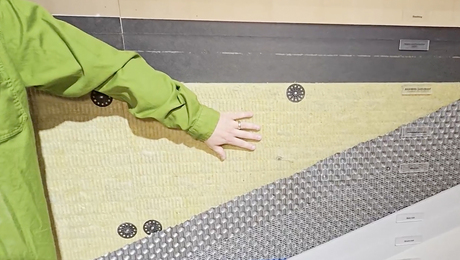Tailgate: John Connell, Architect
This author of The Inspired House and founder of 2morrow Studio is focused on green, modular housing to promote custom design at a reasonable cost.
You’ve said the best houses are more than market commodities.
Yes. They are a place, a personality, an energy, a story! The list goes on.
Home building is, by its very nature, deeply personal.
Shelter is inextricably linked to our sense of identity. But before we consider the personal, we should first recognize that building and making are quintessential and intrinsic to our very existence—as flying is to birds, swimming is to fish, or radar is to bats. Evolutionarily, we are a species entirely dependent on our ability to make what we need.
I’ve always believed this gives each of us a natural right to design and build our own homes. Rather than buying a cookie-cutter home or having a general contractor build one from stock plans, it’s best for us to collect a team of sympathetic professionals that can collaborate around our personal vision for how we want to live.
What fosters inspiration between homeowners, builders, designers, and architects?
Have clients express a sense of their tastes and interests in everyday terms other than home design. How do they like to dress? What are their favorite restaurants, movies, artists, musicians, and sports? Use the familiar language they have used from that conversation to initiate the conversation about creating their home.
There are very few universal strategies because everyone is different, but the earlier you build the team, the better. Making buildings today has become much more complicated—environmental, energy, health, and carbon concerns alone have made the technical aspects of creating a sustainable building incredibly challenging. So if a well-coordinated team of designers, builders, engineers, naturalists, artists, and business professionals is assembled at the very beginning of the project, the odds of success are maximized.
A broadly understood vision will keep the team on course when the inevitable problems arise. Unexpected technical, budgetary, or regulatory challenges can be navigated successfully if everyone on the team shares the same vision. Full integration of design/build is required to keep track of all the possibilities but also all the pitfalls. It allows mid-course corrections without losing sight of the homeowner’s personal goals and values.
Full integration of design/build is required to keep track of all the possibilities but also the pitfalls.
How do personal passions breathe life into design?
Too often the inspiration for a new home is derailed by excessive focus on the “good investment” criteria. Although important, overstating this consideration is like choosing all your food based on the lowest cost per calorie: You will end up with a junk-food diet.
Just as good civic and commercial architecture reflects our culture and politics, good residential architecture reflects how we choose to live. As social animals, we want to live in community with others but still maintain our individuality. The exteriors of houses express how we see ourselves in the context of our communities, while the interiors are more a reflection of individual lifestyles and values.
But sometimes, when a house successfully spans several generations and numerous renovations, it becomes capable of telling a story. This story is writ in the style, craft, and siting of the structure, but also by the selection of materials and methods that allows the house to persist through the years. The more compelling the story, the more likely that house will be valued, updated, and preserved.
In this way, houses are like people. The venerated ones are distinctive and tend to inspire subsequent generations.
What values do you champion in design today?
Embracing the difficult. Preserving the story. Ultimately, residential design needs to reflect both the individual and the collective stories of our culture and our time. In fact, that is inevitable, but can we make beauty and sustainability a bigger part of that story? Embracing the higher design road always invites derision by those following the easier, less enlightened path. But in time, the striking architecture born from pursuing artful sustainability will define the new norm. The first solar homes were awkward and ungainly, but the underlying vision was compelling. Most of those clumsy prototypes are gone today, replaced by more-elegant designs that incorporate what was pioneered back in the sixties. Today I see a lot of really unattractive Passive House projects featured in the architectural press. This first iteration of net-zero designs will surely be followed by a mind-blowing second generation of elegant and artful solutions. Every beautiful design today builds on the courageous innovations of past designer/builders.
For the complete interview, visit FineHomebuilding.com/extras
Fine Homebuilding Recommended Products
Fine Homebuilding receives a commission for items purchased through links on this site, including Amazon Associates and other affiliate advertising programs.

Anchor Bolt Marker

100-ft. Tape Measure

Smart String Line

























